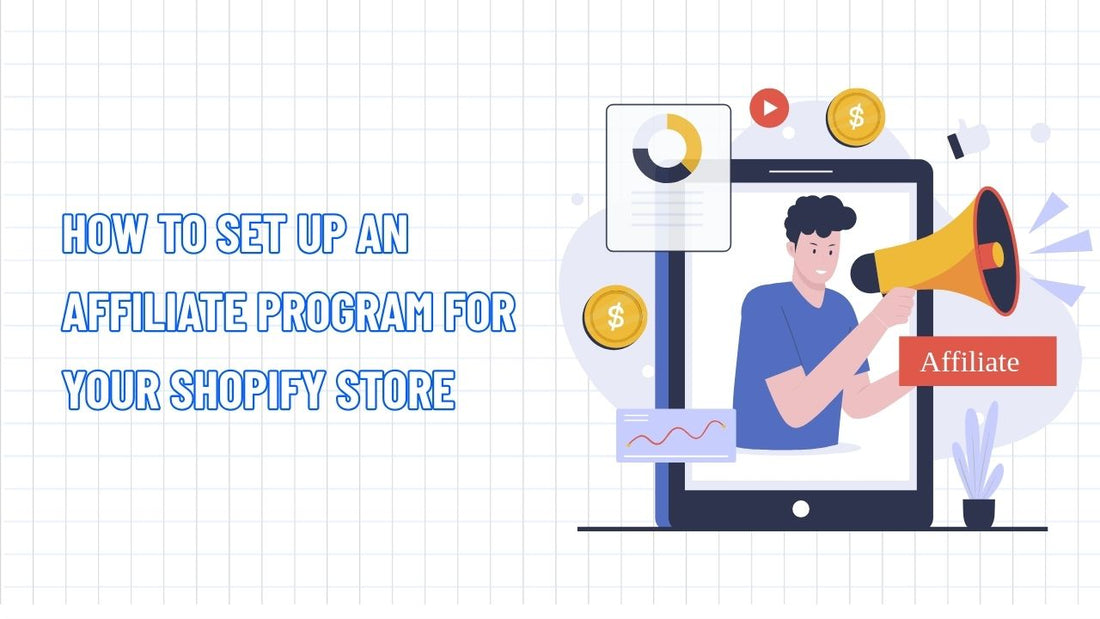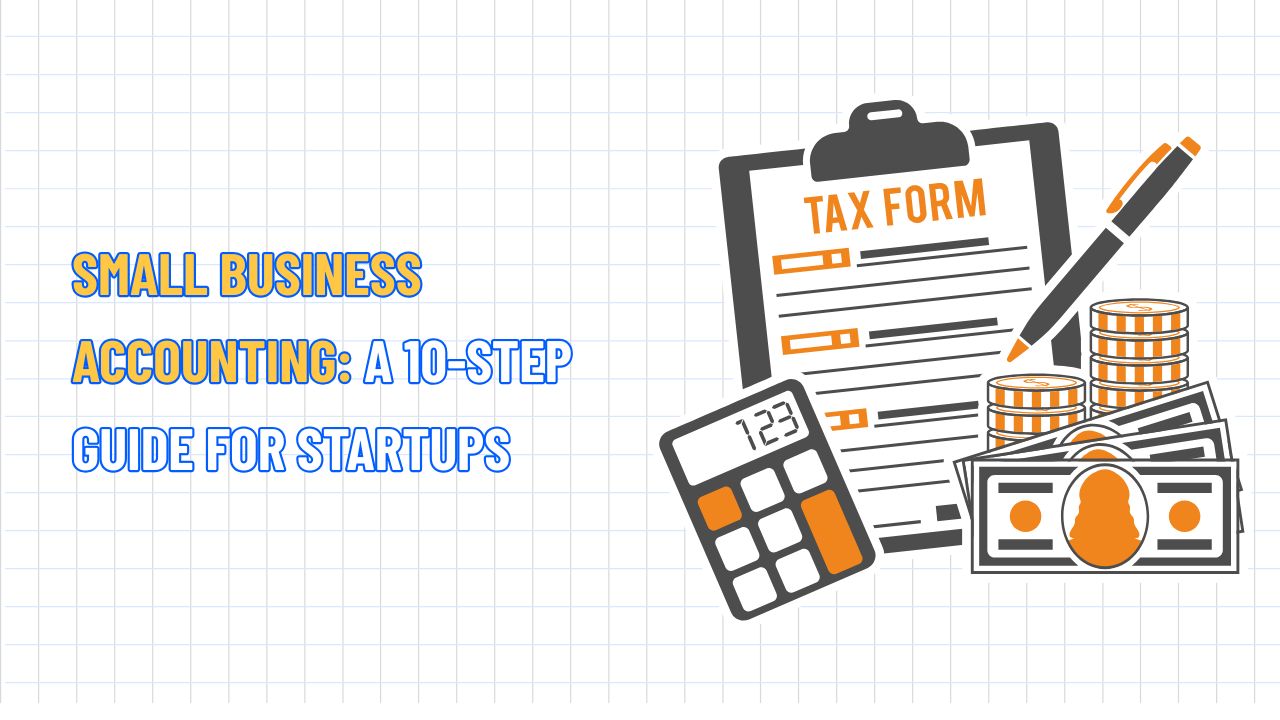How to Set Up an Affiliate Program for Your Shopify Store
Table of Contents Hide
Affiliate marketing is a powerful strategy that enables Shopify store owners to increase traffic, drive sales, and expand brand reach without significant upfront costs. In this article, NextSky delves into how to set up an affiliate program for your Shopify store, sharing step-by-step strategies to gain a competitive edge and achieve standout growth.
Step-by-step guide to setting up an affiliate program for your Shopify store
Building a successful affiliate program requires careful planning, strategic execution, and ongoing management. Below are 12 detailed steps to help you create a robust affiliate program tailored to your Shopify store.
1. Define clear affiliate program goals
Before launching, establish clear, measurable goals to guide your affiliate program. These goals provide the foundation for success. Common objectives include:
- Increase sales: Generate revenue through affiliate referrals.
- Boost brand awareness: Reach new audiences via affiliate promotions.
- Improve conversion rates: Attract high-intent customers through targeted referrals.
Key metrics to track:
- Return on ad spend (ROAS): Aim for a 4:1 ratio, generating $4 in revenue for every $1 spent on commissions (industry standard per impact.com).
- Conversion rate: Target 1-3% for affiliate traffic, significantly higher than display ad click-through rates (0.1%).
- Average order value (AOV): Monitor AOV to identify affiliates driving high-value orders.
Expert tip: Align goals with your business stage. New stores may prioritize brand awareness, while established ones focus on sales volume.
Read more: TOP 30+ Best Shopify Stores of a Year that You Shoudn't Miss
2. Select the right products for your affiliate program
Not every product is ideal for affiliate marketing. To maximize impact, focus on products that:
- Have a high AOV to maximize commissions (e.g., 5% commission on a $100 product is more appealing than on a $10 product).
- Are trending or in high demand (e.g., fashion, cosmetics, tech, or pet products).
- Align with the interests of your affiliates' audiences for authentic promotion.
Example: A Shopify store selling eco-friendly home goods might focus on high-margin items, such as reusable kitchen kits, appealing to sustainability-focused influencers.
Action step: Analyze your product catalogue and sales data to identify top-performing products. Adjust offerings based on affiliate feedback and performance to optimize results.
3. Set competitive commission rates
Commission rates should strike a balance between profitability and competitiveness to attract and retain affiliates. Standard payout models include:
- Percentage-based: 5-20% of the sale price, ideal for products with a high average order value (AOV).
- Fixed rate: A set amount per transaction (e.g., $10 per order), offering predictability.
- Tiered structure: Increase rates based on performance (e.g., 5% for new affiliates, 15% for top performers).
Industry insight: Research competitors in your niche to set competitive rates. For example, cosmetics brands like Charlotte Tilbury offer 10% commissions, while tech companies may offer up to 30% for high-ticket items.
Action step: Use a margin calculator to ensure sustainable commission rates. Start with a baseline (e.g., 8%) and adjust based on affiliate performance.
Read more: Top 10 Strategies to Get Products Stocked in Retail Stores
4. Choose an affiliate marketing platform
An affiliate management platform streamlines tracking, payments, and communication. Top Shopify-integrated options include:
- UpPromote: Offers a free plan, flexible commission structures, and an affiliate marketplace. Pricing starts at $29.99/month.
- LeadDyno: Offers individual affiliate dashboards and social media tracking tools. Pricing starts at $49/month.
- Refersion: Features a marketplace for recruiting affiliates and provides detailed analytics. Pricing starts at $119/month.
Key features to look for:
- Seamless Shopify integration for real-time sales tracking.
- Customizable commission structures.
- Affiliate recruitment tools, such as marketplaces or signup forms.
- Robust analytics for tracking ROAS, conversion rates, and AOV.
Expert tip: Test platforms with free trials to find the best fit for your store's needs.
5. Recruit the right affiliates
Finding affiliates who align with your brand is crucial to the success of your program. Focus on:
- Alignment: Partner with affiliates whose audiences match your target market. For example, fitness influencers are ideal for sportswear brands.
- Engagement: Prioritize creators with high engagement rates over those with a large number of followers. A micro-influencer with 5,000 engaged followers can outperform a 100,000-follower influencer with low interaction.
- Credibility: Choose affiliates known for authentic, transparent content trusted by their communities.
Effective recruitment strategies:
- Affiliate marketplaces: Use platforms like UpPromote or Refersion to connect with verified creators.
- Social media outreach: Identify relevant influencers on Instagram, TikTok, or YouTube, especially those in your niche.
- Website signup forms: Add an affiliate program page to your Shopify store with a signup form (e.g., via Shopify Forms) to attract potential partners.
- Email campaigns: Invite loyal customers or newsletter subscribers to join, turning them into natural brand ambassadors.
Example: Moonboon, a Shopify store selling baby sleep accessories, recruited parenting bloggers and Instagram influencers, generating over $1 million in affiliate revenue.
Read more: DIY Ecommerce Store Design for Beginners: Building a Website
6. Screen and onboard affiliates
Thoroughly vet potential affiliates to ensure brand alignment and compliance:
- Audience engagement: Look for consistent interactions (likes, comments, shares) on their content.
- Content quality: Ensure their tone, style, and values align with your brand's tone, style, and values.
- Compliance: Affiliates must disclose commissions in accordance with FTC guidelines (e.g., "This post contains affiliate links. I earn a commission from qualifying purchases").
Onboarding process:
- Provide clear brand guidelines (e.g., logo usage, approved messaging).
- Send product samples or discount codes to affiliates to allow them to experience your products firsthand.
- Establish clear expectations for content frequency and promotional strategies to ensure consistency and effectiveness.
Expert tip: Monitor affiliates with unusually high conversion rates, as this may indicate fraudulent activity, such as credit card abuse.
Read more: TOP 45 SEO Checklist Online Stores that Merchants Cann't Miss
7. Set cookie duration
The cookie duration determines how long a transaction is credited to an affiliate after a customer clicks their link, serving as a "credit window" for tracking referrals. Common durations include:
- 24 hours, typical for programs like Amazon Associates.
- 30, 60, or 90 days, more common for Shopify stores and independent brands.
Recommendation: Start with a 30-day cookie to balance affiliate incentives with tracking accuracy. Adjust based on your product's purchase cycle (e.g., high-value items may benefit from longer cookies).
Read more: Dropshipping vs Affiliate Marketing: Which Model Should You Choose?
8. Develop a gifting strategy
Gifting products to affiliates encourages authentic promotion and builds trust. Strategies include:
- Product selection: Let affiliates choose from a curated store selection or provide discount codes (e.g., 90% off or $100 store credit).
- Personalization: Tailor gifts to the affiliate's audience (e.g., makeup samples for beauty bloggers).
- Consistency: Offer periodic gifts to maintain engagement and foster loyalty.
Example: A Shopify store selling sports equipment might gift yoga mats to health influencers, encouraging them to share authentic reviews and tutorials.
Action step: Gifting fosters authentic promotion, strengthening trust between your brand and consumers by enabling real product experiences.
Read more: Selling Affiliate Products on Shopify: All You Need To Know
9. Create and distribute affiliate links
Generating unique affiliate links for each partner ensures accurate sales tracking and campaign optimization.
- Create links for specific products or your entire store.
- Standardize link formats (e.g., yourstore.com/affiliate-name) for brand consistency.
- Shorten long URLs using tools like Bitly for a better user experience.
Expert tip: Provide affiliates with pre-written content (e.g., email templates, social media captions) to simplify promotion while maintaining brand voice.
10. Design promotions to boost engagement
Time-limited promotions motivate affiliates and create a sense of urgency. Examples include:
- Higher commission rates: Offer a temporary 15% commission (up from 10%) for a one-month campaign.
- Customer discounts: Offer exclusive discount codes (e.g., 20% off) for affiliates to share with their customers.
- Seasonal campaigns: Align promotions with holidays or events (e.g., Black Friday sales).
Example: Minky Couture, a premium blanket brand, offered 50% off codes through affiliates, boosting conversions and commissions.
11. Manage and nurture affiliate relationships
Treat affiliates as strategic partners, not just marketing channels, to build trust and long-term value.
- Track performance: Monitor metrics like conversion rates, total sales, and AOV to identify top performers.
- Reward success: Offer bonuses, higher tiers, or exclusive products for high-performing affiliates.
- Communicate regularly: Share updates, new product launches, and promotion opportunities via email or in-app messaging.
Expert tip: Celebrate affiliate milestones (e.g., 100 sales) with public recognition or personalized rewards to boost motivation and drive performance.
12. Monitor and optimize program performance
Continuous tracking and evaluation ensure your affiliate program meets revenue and growth goals. Key metrics include:
- Total sales: Assess revenue generated through affiliates.
- Sales by affiliate: Identify top performers and those needing support or training.
- Payout-to-sales ratio: Track the correlation between commissions paid and actual profits to ensure profitability.
- Affiliate retention rate: Measure community loyalty by tracking retention and churn.
Optimization strategies:
- Increase commissions for high-performing sales representatives to encourage sustained sales growth.
- Adjust product offerings based on real sales data to focus on high-profit items.
- Refine recruitment to target affiliates better aligned with your brand and market.
Advanced strategies to elevate your Shopify affiliate program
In a competitive landscape, implement these advanced strategies:
- Leverage loyal customers: Invite loyal customers to join your affiliate program as natural brand ambassadors, boosting sales through authentic referrals.
- Integrate email marketing: Promote your affiliate program in newsletters, providing signup instructions and highlighting commission opportunities to encourage long-term engagement and reach.
- Use remarketing ads: Combine affiliate links with remarketing ads to re-engage visitors who didn't convert, increasing conversion rates and ROI per click.
- Co-create content: Partner with top affiliates to produce blogs, videos, or social media campaigns, enhancing authenticity and expanding reach to new communities.
- Expand affiliate networks: Join platforms like ShareASale, Rakuten, or Impact to access broader marketer networks, diversifying traffic sources while maintaining partner quality.
Setting up an affiliate program for your Shopify store is a strategic move that drives growth, builds brand trust, and reaches new audiences. By following NextSky's guide, you can enhance your store's performance and achieve exponential sales growth in the competitive e-commerce landscape.










